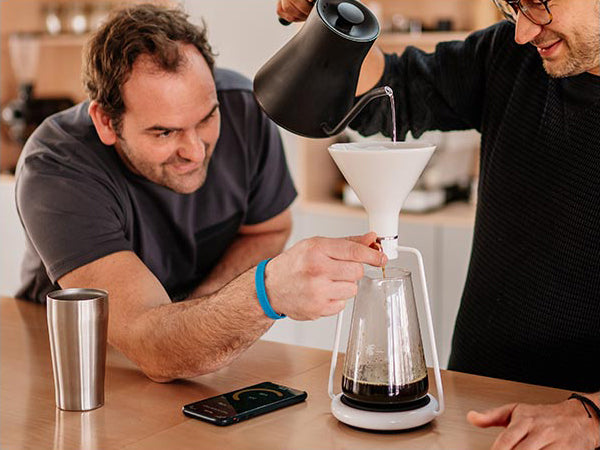The Bloom
Written by:
Dušan Matičič, head roaster at GOAT STORY
You get your hands on a bag of freshly roasted coffee and with a feel of total excitement, you grind it, pour water over it, wait for those two to three minutes, and … hey, somehow I expected more.
There’s a catch to brewing coffee, especially when it’s freshly roasted. It’s called blooming.
The basics
When coffee beans are roasted, a lot of chemical magic happens inside them. One of them is the release of carbon dioxide. This is the reason that roasters will tell you to wait a few days before brewing your coffee. But even later on, a bit of gas still persists, and to brew a good cup of coffee, we need to get rid of it.
But … why?
Because carbon dioxide is released almost immediately when coffee is ground and comes in contact with hot water. It is released as small bubbles that actually prevent the extraction of coffee, as the water gets pushed away from the grounds. Plus, carbon dioxide tastes sour. We don’t want that in coffee.

Traditional pour over brewers can make it a challenge to bloom your coffee correctly. With GINA coffee brewer you can stop the flow of coffee during the first phase of brewing to achieve the perfect bloom and get the most flavors from your filter coffee.
Blooming solves your problems
Here is the solution … When brewing coffee, make the first pour with about twice the amount of coffee you use and let it rest for some time. Usually, 30 seconds will do just fine, but sometimes (especially if it’s a fresh roast), you’ll need to wait a little more. Just keep an eye for bubbles forming. If there’s movement in your coffee and water mixture, there’s still gas inside and you should wait a little bit more.
A neat trick!
If you are using GINA Smart Coffee Instrument, you can close the valve during blooming and release it for your second pour. It'll produce a smoother and consistent bloom and a bit more body in your cup.

There you go! Now you know what blooming is!
Here are a few key takeaways:
- Roasted coffee contains carbon dioxide.
- Carbon dioxide prevents water from touching the ground coffee and extracting the good stuff.
- When brewing coffee, pour a small amount of coffee in your first pour and wait about 30 seconds.
- Blooming quickly degasses coffee.
- Freshly roasted coffee takes more time to degas.
- If there are no bubbles and movement during your bloom, your coffee is probably stale or oxidized.






